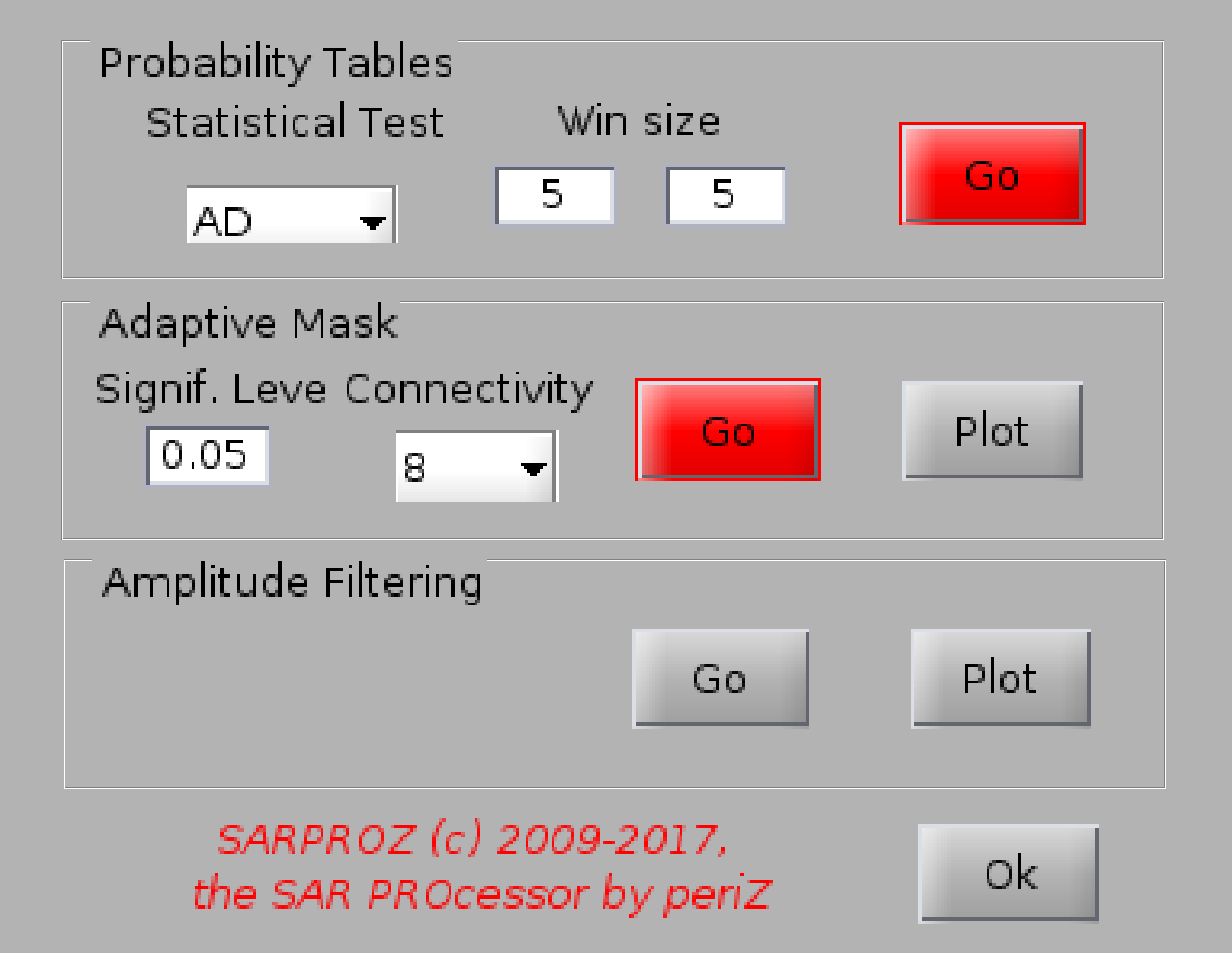
Help for MULTI-TEMPORAL ADAPTIVE MASK
With this function you can generate a mask for interferometric adaptive filtering.
The mask is generated on the basis of likeness between adjacent pixels.
To evaluate the likeness, the amplitude time series of adjacent pixels are compared according to statistical tests
(currently, 2 options are available: Kolmogorov-Smirnov and Anderson Darling).
The p-value of the statistical comparison is saved into 2 matrixes (--> probability tables).
After that, a significance level threshold can be set up and the corresponding mask is created.
The threshold should be chosen in order to identify reasonable clusters of similar pixels.
Tests are still undergoing to define the best strategy for chosing the significance level.
Connectivity of adjacent pixels can also be chosen in order to form clusters (4 or 8 pixels).
Once the mask is generated, a few properties are displayed:
- nr of formed clusters
- mean size of the clusters in pixels
- max size in pixels
- nr of unclustered pixels
- nr of big clusters (for which the size in pixels exceeds mu+3*sigma)
Moreover, one can plot the histogram of the clusters size, the clusters size in SAR coordinates and the unclustered pixels.
For a better visualization, histogram of clusters size and clusters size in SAR coordinates can be shown after excluding the big clusters.
When the mask is available, it can be chosen for filtering interferograms among the filtering options ("MT adapt.")